- Home
- James Patterson
Second Honeymoon Page 7
Second Honeymoon Read online
Page 7
Only he was too late. The mechanic had him dead to rights.
BLAM!
The mechanic stood motionless for a second, his finger frozen on the trigger. The only movement was the blood spurting from his neck.
Sarah fired a second shot, and finally the mechanic dropped his gun. It fell to the ground. Then he did the same.
Travis Kingslip had a partner.
Sarah walked straight past the mechanic without checking for a pulse. She knew dead when she saw it.
“Thanks,” said Trout, joining her at the Sebring. “You scared me.”
“No. Thank you,” said Sarah.
Trout opened the driver’s side door, then pressed the button on the far left of the dash to unlock the trunk.
Pop!
There she was. Just as Sarah had pictured her before reminding herself not to make it personal. Will I ever master that rule? Do I really want to?
Lying on the floor of the trunk, bound and gagged, was a thirteen-year-old girl who had gone missing only that morning. The sun had practically turned the trunk into an oven. She was barely conscious, suffering from heatstroke.
But she was alive.
She was going to be okay. Maybe because Sarah had made it personal.
Chapter 30
THE DO NOT DISTURB sign outside Sarah’s hotel room in Tallahassee hung there a little late the following morning. Let it be, let it be.
After sleeping in, she went for a four-mile run, returned for a long shower, and then happily ate the cheesiest of cheese omelets from room service, putting back all the calories she’d burned the previous day. Bacon and toast, too. Yum.
She watched barely a minute of CNN before flipping over to VH1 Classic to check out a few videos. She couldn’t remember the last time she’d done that.
Most of the songs she didn’t know—or even like—but that didn’t matter. She cranked up the volume anyway, even more so when they played the old Guns N’ Roses video for “November Rain.” She absolutely loved that song. It reminded her of her teenage years in Roanoke, Virginia. Back then, a girl either had a crush on the lead guitarist, Slash, or thought he was gross. Sarah was definitely one of those who had a crush.
As for the plan for the rest of the day, that was simple. There was no plan.
Maybe she’d go lie out by the pool, do a little reading. Sarah loved biographies and had been carrying around a biography of the cartoonist Charles Schulz, which she never seemed to have the time to start. Now she did.
A whole twenty-four hours, she figured.
This was her mental health day, long overdue, and while the aftermath of nabbing Travis Kingslip involved a mountain of paperwork, she had no intention of tackling any of it right away. Not a chance.
Tomorrow, Agent Brubaker would return to work at Quantico. Today, Sarah Brubaker was playing hooky.
And it felt positively fantastic. All the way up until she spread her towel on a chaise lounge by the pool, stretched out, and turned to page 1 of the Schulz biography.
That’s when her cell rang.
Oh, no. Please, no…
It wasn’t her personal phone. That she could’ve ignored. This was her satellite-encrypted work phone, property of the FBI.
On the other end was her boss, Dan Driesen, and he wasn’t calling just to say hi. He’d already sent his congratulatory e-mail for the Kingslip capture. This was something else.
“Sarah. Need you back here for a briefing,” he said. “Fast. Today.”
In person, Driesen was relatively easygoing and patient. On certain subjects—government bureaucracy, fly fishing, or classic cars, for instance—he could even talk your ear off.
But on the phone, he was like a talking telegram.
“Three homicides submitted to ViCAP from three different states,” he continued. “All pointing toward a lone serial killer on the move.”
ViCAP stood for Violent Criminal Apprehension Program, the FBI’s national inventory of every violent crime committed in the United States.
“Over what time period are we talking?” asked Sarah.
“Two weeks.”
“That’s fast.”
“Superfast.”
“Three murders?”
“Yep.”
“Three different states?”
“So far,” said Driesen.
“What’s the connection?”
“The victims,” he answered. “They all have the same name. O’Hara. Damndest thing I’ve ever heard.”
Chapter 31
THE SANDWICHES WERE a dead giveaway.
Sarah had attended countless briefings conducted by Dan Driesen, and not once had he provided anything remotely edible for the occasion. No muffins or bagels, no cookies or anything else to snack on. Certainly no sandwiches, not ever. It just wasn’t his style. You want catered briefings? Go work for Martha Stewart.
Yet there they were. Sandwiches in the center of the conference room table.
After catching the first flight back from Tallahassee, grabbing a cab straight from Reagan National to Quantico, dropping off her suitcase in her office, and making a beeline for the conference room with only seconds to spare before Driesen’s four o’clock briefing, it was the first thing she noticed. A platter of sandwiches. Never had assorted cold cuts carried so much subtext.
This was not your average briefing.
More to the point, Driesen wasn’t completely calling the shots. He was catering to someone else.
Sarah figured she’d know soon enough. Driesen hadn’t arrived yet.
In the meantime, she accepted congratulations for her work in Tallahassee from the rest of the room—a mix of agents and analysts, heavy on the analysts. The BAU, or Behavioral Analysis Unit, was first and foremost about the gathering and interpretation of information. For every agent in the field, there were three analysts back home in Quantico.
“So what’s the story?” asked Ty Agosta, the unit’s criminal psychiatrist and perhaps the last man on the planet who routinely wore corduroy jackets with elbow patches. Not only did he wear them, he made them work.
“I was hoping you knew,” said Sarah.
“Driesen’s been locked in his office for the past hour,” said Agosta. “That’s all I know.”
“With whom?”
He nodded toward the door. That’s who.
Sarah turned to see Dan Driesen walking into the room with his typical long strides. Accompanying him were three men in dark suits, sporting visitor badges and the rigid posture that usually came with wearing a shoulder holster all day long.
One of them looked familiar. Sarah had seen him before, but couldn’t quite place the face. Surely Driesen would introduce him, as well as his two cohorts, to the room.
Only he didn’t. Instead, Driesen simply started the briefing. The three men, as if they were only on hand to observe, took seats in the row of chairs along the perimeter of the room.
After they each grabbed a sandwich, that is.
“Nevada, Arizona, and Utah,” began Driesen, the room lights dimming courtesy of Stan, the audio/video technician, who worked all the feeds to the monitors at the front of the room.
The largest of the flat screens illuminated behind Driesen as he continued, the specifics of the top-line summary he’d given Sarah over the phone that morning appearing as bullet points.
Three different states.
Three dead men.
All within a two-week span.
And all with the same first and last name.
The screen wiped clean as the final bullet point shot up in large type behind Driesen.
THE JOHN O’HARA KILLER, it read.
Chapter 32
“JESUS, THERE MUST be hundreds of John O’Haras out there,” said Eric Ladum, a technical analyst sitting across from Sarah. Whenever he was away from his keyboard, he was always twirling a pen just to keep his fingers busy.
“More like a thousand,” responded Driesen. “Give or take.”
Sarah turned to the Gang of Three sitting
along the opposite wall. They hadn’t said a word. They hadn’t even been introduced. But Sarah now knew why they were in the room. She knew who they were.
Driesen continued, detailing the police investigations for the first two victims. Both were killed with two shots from a .38. One through the head, the other through the chest. There were no suspects or solid leads, and the bodies were all “clean,” meaning there was no evidence, trace or otherwise, left behind.
“Now comes the third O’Hara,” said Driesen. “A ski instructor living in Park City, Utah. He was found yesterday morning on the patio behind his house.”
Then the crime-scene photos of the guy appeared on the screen. He was lying faceup—that is, with what was left of his face looking at the sky—in a pool of dried blood, the edges of which had the splattered appearance of a close-range shot. It would be a closed casket for sure.
During her first year with the unit, when the gory handiwork of serial killers flashed up on a screen during briefings, Sarah would always turn away in disgust for a second or two. It was instinct. A coping mechanism. The way her mind reacted to seeing something so unsettling and out of the norm.
Now, for better or worse, Sarah barely blinked.
“In the right pocket of a Windbreaker worn by the victim there was a paperback copy of James Joyce’s Ulysses,” said Driesen. He paused for a moment as if fishing for questions. Eric Ladum, still twirling his pen, was more than happy to bite.
“You think it was placed by the killer?” the analyst asked.
Driesen nodded. “I do.”
“Was anything highlighted? A passage? Some words?” asked Ladum.
“No,” said Driesen. “Every page intact. Not even a dog-ear.”
“Wait, hold on a second,” said Sarah, chiming in. “We’re talking about a guy named O’Hara, right? Ulysses is practically a second Bible for the Irish.”
“That’s true, but this O’Hara lives in Utah and the book came from Bakersfield, California,” said Driesen. “It’s a library book.”
“Was it checked out?” she asked.
“No such luck.”
“Have we contacted the library to see—”
Driesen cut her off. “Yes, the library has one copy that’s unaccounted for.”
“Since when?”
“Since—”
“Congratulations!” came a voice from the side of the room, cutting them both off. It belonged to one of the Gang of Three, the one Sarah couldn’t quite place. With only a single word he’d managed to convey an annoying trifecta of impatience, arrogance, and sarcasm.
As everyone turned to him, he stood up. “Not only do we have this guy on three murders, but we can also nail him on a stolen library book. Well done, people! Just marvelous.”
Ty Agosta leaned forward, placing his elbow patches on the table. The criminal psychiatrist figured there was no crime in asking a simple question.
“I’m sorry, who are you?” he asked.
But it was as if Agosta had never opened his mouth or been in the room, for that matter. He was flat-out ignored.
“Listen, maybe the killer is trying to tell us something or maybe he isn’t,” said the mystery guest. “What I need you to tell me, though, is how you plan on catching this psycho.”
And just like that, two bells went off in Sarah’s head.
The first was the guy’s name. Jason Hawthorne. He was deputy director of the Secret Service. He wasn’t there on behalf of his boss, or even his boss’s boss, the secretary of Homeland Security.
The reason Jason Hawthorne and his sandwich-eating entourage were in the room was due to everyone’s boss.
The president.
That was the second bell that went off in Sarah’s head.
The president’s brother-in-law was named John O’Hara.
Chapter 33
“SARAH, CAN I see you in my office?” asked Driesen as the conference room emptied after the briefing. He was in the middle of a good-bye handshake with Hawthorne, which was clearly not a mutual-admiration moment.
“Sure,” Sarah answered, as if it were no big deal. But it was a very big deal.
There were two levels of briefings that took place at the BAU. Both were classified, but only one was completely unfiltered. That briefing was the one that took place in Driesen’s office. Like the original Lucky Strike cigarettes, Driesen gave it to you straight.
With Hawthorne gone, Sarah followed Driesen past his secretary, Allison, and into his corner office, which looked out over a large marine training field.
“Close the door behind you,” he said, heading behind his desk.
She did, then sat down in one of the two chairs facing him. He stared at her for a moment. Then, of all things, he let go with a chuckle.
Sarah did the same.
There was nothing funny about a serial killer and the fact that there were three innocent people dead, but sometimes battlefield humor was the only way to stay sane. In this case, the implied joke was about the president. Specifically, what he might have been thinking in the far—and definitely off-the-record—reaches of his mind when he was first briefed about the John O’Hara Killer.
I’ve got one target you can have for free, buddy. Take him, he’s yours.
John O’Hara, the president’s brother-in-law, was a major-league screwup. If he wasn’t being caught by the TMZ cameras stumbling out of a Manhattan bar at 3:00 a.m., he was on cable television—at about the same time—starring in his own infomercial selling “authentic” presidential sheets and pillowcases. “Just like they have in the Lincoln Bedroom!”
Probably because he’d stolen them.
The guy was a Billy Carter–size embarrassment. And a late-night comedian’s dream come true.
“Do you think it’s somehow connected to him?” asked Sarah. “I can’t imagine…”
Driesen shrugged. “It wouldn’t make much sense. Then again, going around killing people with the same name doesn’t exactly scream ‘logical,’ now, does it?”
“But of all names to choose…”
“I know. Hawthorne, as you saw, is already at DEFCON 1. He placed a detail on the brother-in-law starting last night.”
“Was O’Hara told why he was getting protection?” Sarah asked. She thought she already knew the answer.
“No. That’s the other tricky thing about this,” said Driesen. “O’Hara’s big mouth aside, this can’t go public. We can’t have a nationwide panic involving every poor son of a bitch out there named John O’Hara, at least not yet.”
“Is that why Hawthorne was here and not Samuelson?” asked Sarah.
Driesen smiled as if to say, “Good for you.” He appreciated that his young agent had grown quite adept at recognizing political implications. Cliff Samuelson, Hawthorne’s boss, was director of the Secret Service.
“I didn’t ask, but it’s safe to assume. They need as much separation from the president as they can get,” said Driesen.
“God, I can see the headline already: PRESIDENT PROTECTS BROTHER-IN-LAW O’HARA BUT NONE OF THE OTHERS.”
“Needless to say, that headline can never be written.”
“But at some point—”
“Yes, at some point we’ll have to go public with the killings, blast it from every rooftop. But between the first and third dead O’Hara, there are over forty John O’Haras on the map that the killer didn’t kill. The point being we can’t pretend to think we can protect them all.”
“So in the meantime?”
“That only makes your job harder,” he said.
Sarah cocked her head. “My job?”
“You didn’t think you were in here to hear about my fly fishing plans for the weekend, did you? You leave tomorrow morning.”
Sarah didn’t need to ask where he was sending her. The first rule of catching serial killers? Always start with the warmest dead body.
“I hear Park City’s nice this time of year,” she deadpanned.
He smiled. “Listen, I realize you’
re just back from Florida and that your suitcase is sitting in your office. So take the night off, will you? And by that I don’t mean go home and do laundry.”
“Okay, no laundry,” she said with a chuckle.
“I’m serious,” he retorted. “Go do something fun, kick up your heels. Lord knows you probably need it.”
He was right about that.
“Any suggestions?” she asked.
“No, but I’m sure you’ll think of something.”
Chapter 34
SARAH RANG THE doorbell to Ted’s penthouse apartment for a second time, waiting in the hallway of the Piermont Residences in downtown Fairfax and wondering why he wasn’t answering. She knew he was there.
Only minutes earlier, she’d called his number from her own apartment four floors below, dialing *67 first to block her name from coming up on his caller ID.
It was all pretty funny, she thought, worthy of a giggle. The last time she called a boy and hung up as soon as he answered, she was probably in junior high school, listening to Bananarama on her Sony Walkman and wearing acid-washed Guess jeans.
Now here she was listening for Ted behind his door while wearing a long navy blue raincoat. And nothing else. Not a stitch underneath.
Kick up my heels? Go and have fun? If only Driesen could see me now. On second thought, that’s probably not a good idea.
If only Ted would answer the door. C’mon, honey, I’m starting to feel a draft underneath this coat. Not to mention the fact that I’m a tad bit embarrassed.
They’d only been dating for five months, after all. Then again, that was two months longer than her last relationship, and three months longer than the one before that.
With Ted, things seemed to be different, though. And much, much better. He was a successful D.C. attorney, “high-powered and even higher-charging,” according to a profile of him in the Washington Post. He knew all about the long hours and the strains of a professional career. Sure, maybe he had one too many macho photos of himself hanging in the apartment—white-water rafting, skiing the back bowls of Vail—but Sarah was willing to overlook a touch of vanity. He wasn’t the possessive type; he didn’t need to own her. That was nice; very nice.

 Miracle at Augusta
Miracle at Augusta The Store
The Store The Midnight Club
The Midnight Club The Witnesses
The Witnesses The 9th Judgment
The 9th Judgment Against Medical Advice
Against Medical Advice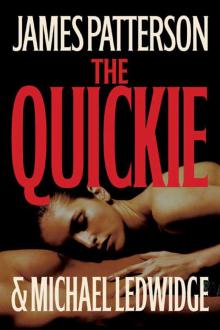 The Quickie
The Quickie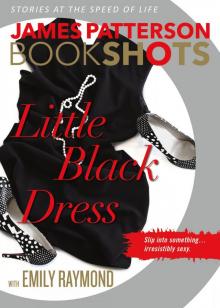 Little Black Dress
Little Black Dress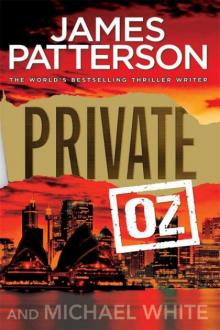 Private Oz
Private Oz Homeroom Diaries
Homeroom Diaries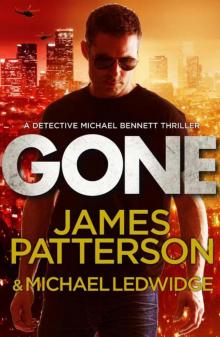 Gone
Gone Lifeguard
Lifeguard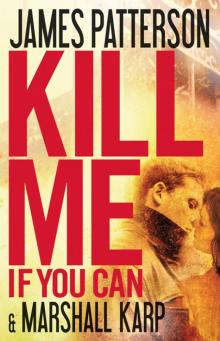 Kill Me if You Can
Kill Me if You Can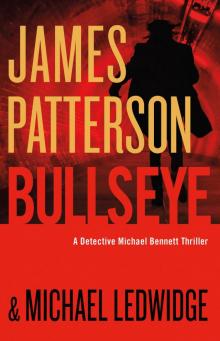 Bullseye
Bullseye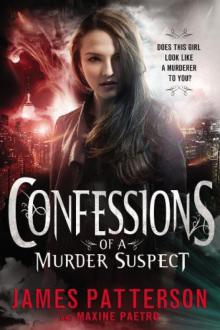 Confessions of a Murder Suspect
Confessions of a Murder Suspect Black Friday
Black Friday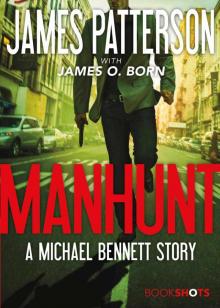 Manhunt
Manhunt Filthy Rich
Filthy Rich Step on a Crack
Step on a Crack Private
Private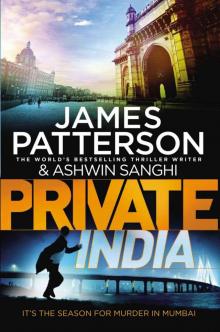 Private India
Private India Game Over
Game Over Private Sydney
Private Sydney The Murder House
The Murder House Mistress
Mistress I, Michael Bennett
I, Michael Bennett The Gift
The Gift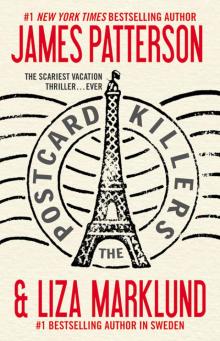 The Postcard Killers
The Postcard Killers The Shut-In
The Shut-In The House Husband
The House Husband The Lost
The Lost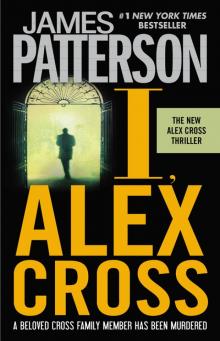 I, Alex Cross
I, Alex Cross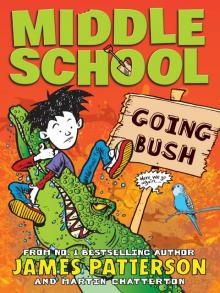 Going Bush
Going Bush 16th Seduction
16th Seduction The Jester
The Jester Along Came a Spider
Along Came a Spider The Lake House
The Lake House Four Blind Mice
Four Blind Mice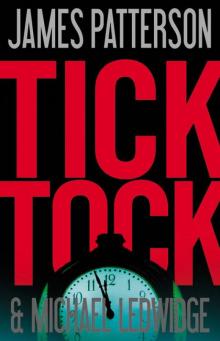 Tick Tock
Tick Tock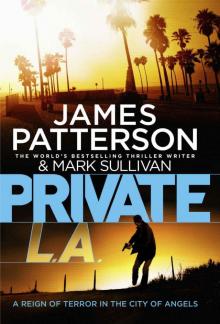 Private L.A.
Private L.A.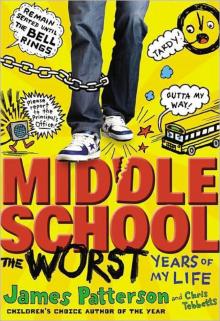 Middle School, the Worst Years of My Life
Middle School, the Worst Years of My Life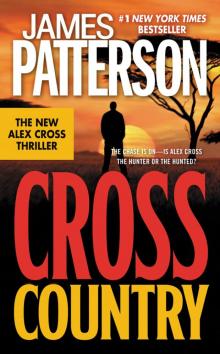 Cross Country
Cross Country The Final Warning
The Final Warning Word of Mouse
Word of Mouse Come and Get Us
Come and Get Us Sail
Sail I Funny TV: A Middle School Story
I Funny TV: A Middle School Story Private London
Private London Save Rafe!
Save Rafe!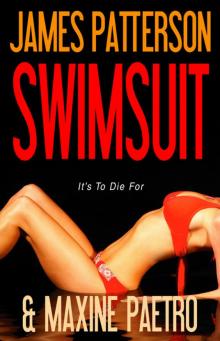 Swimsuit
Swimsuit Sam's Letters to Jennifer
Sam's Letters to Jennifer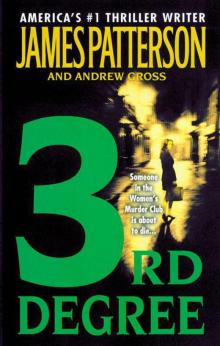 3rd Degree
3rd Degree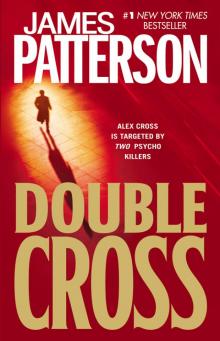 Double Cross
Double Cross Judge & Jury
Judge & Jury Kiss the Girls
Kiss the Girls Second Honeymoon
Second Honeymoon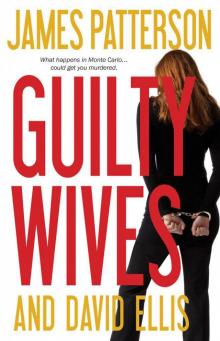 Guilty Wives
Guilty Wives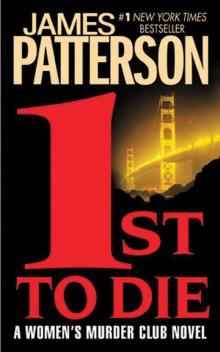 1st to Die
1st to Die NYPD Red 4
NYPD Red 4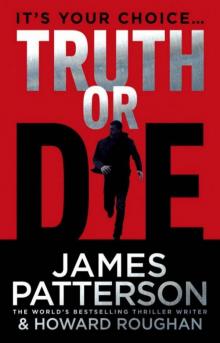 Truth or Die
Truth or Die Private Vegas
Private Vegas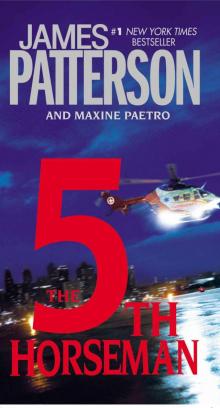 The 5th Horseman
The 5th Horseman 7th Heaven
7th Heaven I Even Funnier
I Even Funnier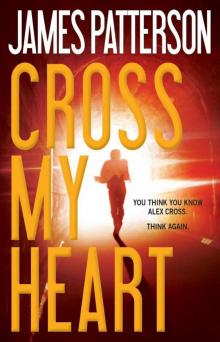 Cross My Heart
Cross My Heart Let’s Play Make-Believe
Let’s Play Make-Believe Violets Are Blue
Violets Are Blue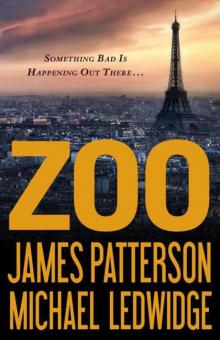 Zoo
Zoo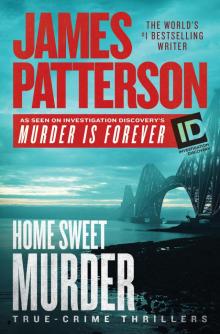 Home Sweet Murder
Home Sweet Murder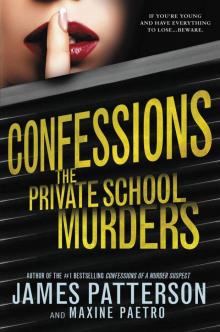 The Private School Murders
The Private School Murders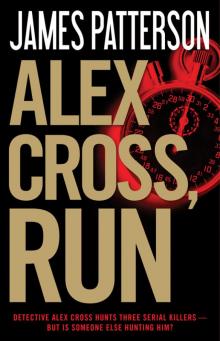 Alex Cross, Run
Alex Cross, Run Hunted: BookShots
Hunted: BookShots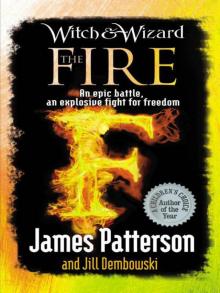 The Fire
The Fire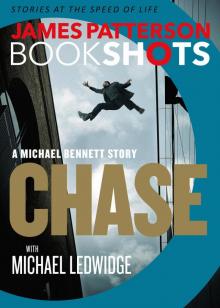 Chase
Chase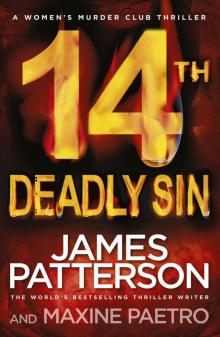 14th Deadly Sin
14th Deadly Sin Bloody Valentine
Bloody Valentine The 17th Suspect
The 17th Suspect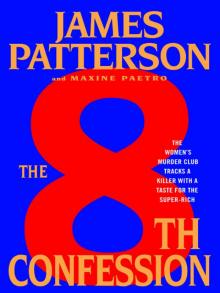 The 8th Confession
The 8th Confession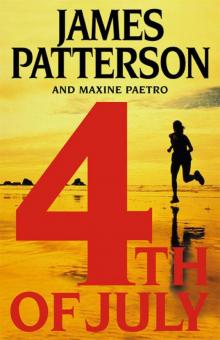 4th of July
4th of July The Angel Experiment
The Angel Experiment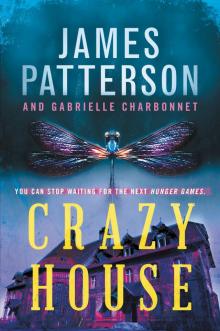 Crazy House
Crazy House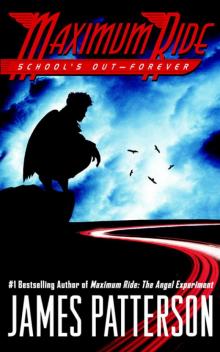 School's Out - Forever
School's Out - Forever Suzanne's Diary for Nicholas
Suzanne's Diary for Nicholas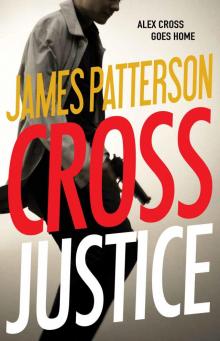 Cross Justice
Cross Justice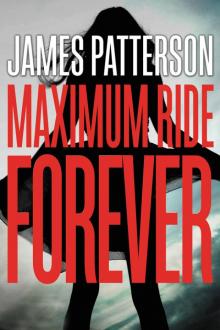 Maximum Ride Forever
Maximum Ride Forever The Thomas Berryman Number
The Thomas Berryman Number Honeymoon
Honeymoon The Medical Examiner
The Medical Examiner Killer Chef
Killer Chef Private Princess
Private Princess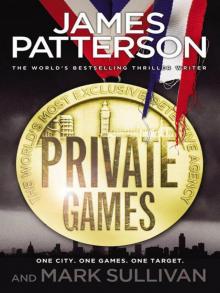 Private Games
Private Games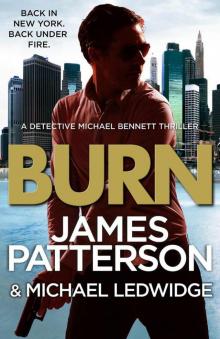 Burn
Burn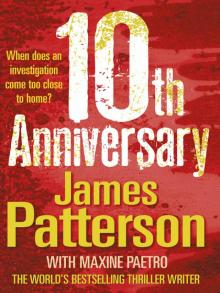 10th Anniversary
10th Anniversary I Totally Funniest: A Middle School Story
I Totally Funniest: A Middle School Story Taking the Titanic
Taking the Titanic The Lawyer Lifeguard
The Lawyer Lifeguard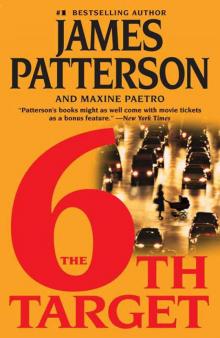 The 6th Target
The 6th Target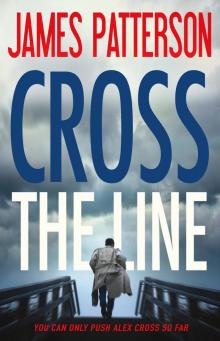 Cross the Line
Cross the Line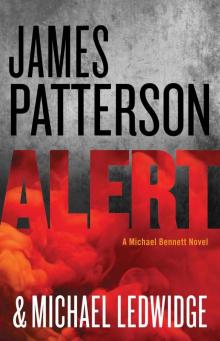 Alert
Alert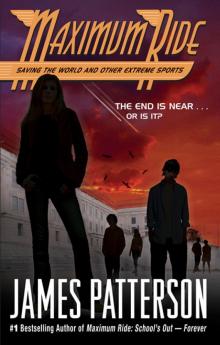 Saving the World and Other Extreme Sports
Saving the World and Other Extreme Sports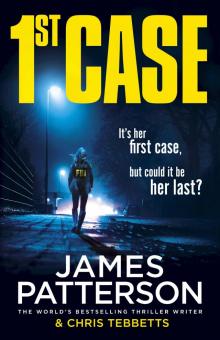 1st Case
1st Case Unlucky 13
Unlucky 13 Haunted
Haunted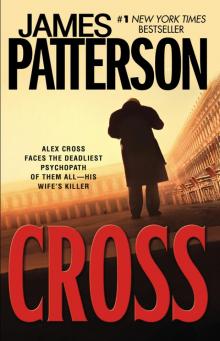 Cross
Cross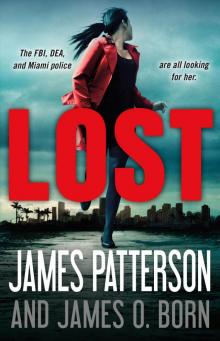 Lost
Lost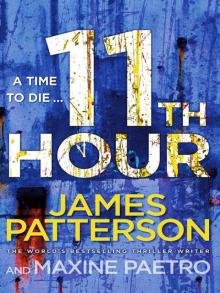 11th Hour
11th Hour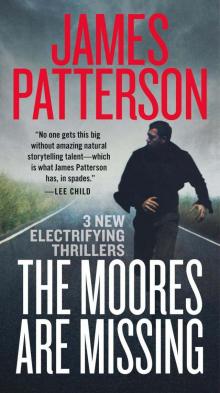 Bookshots Thriller Omnibus
Bookshots Thriller Omnibus Target: Alex Cross
Target: Alex Cross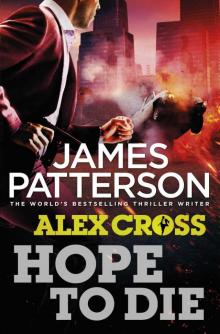 Hope to Die
Hope to Die The Noise
The Noise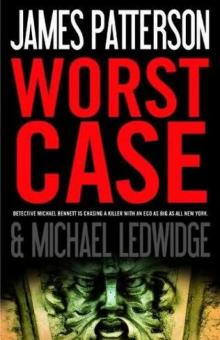 Worst Case
Worst Case Dog's Best Friend
Dog's Best Friend Nevermore: The Final Maximum Ride Adventure
Nevermore: The Final Maximum Ride Adventure I Funny: A Middle School Story
I Funny: A Middle School Story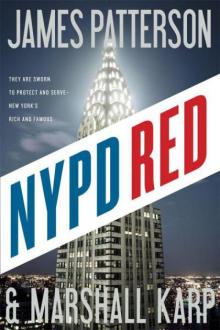 NYPD Red
NYPD Red Till Murder Do Us Part
Till Murder Do Us Part Black & Blue
Black & Blue Fang
Fang Liar Liar
Liar Liar The Inn
The Inn Sundays at Tiffany's
Sundays at Tiffany's Middle School: Escape to Australia
Middle School: Escape to Australia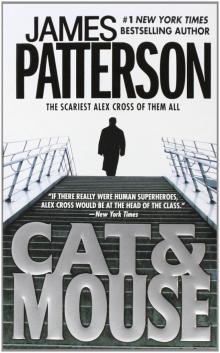 Cat and Mouse
Cat and Mouse Instinct
Instinct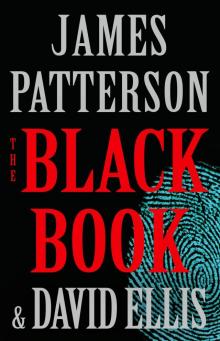 The Black Book
The Black Book London Bridges
London Bridges Toys
Toys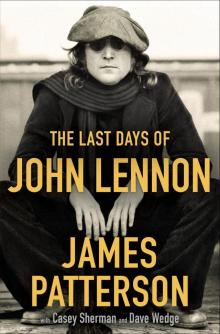 The Last Days of John Lennon
The Last Days of John Lennon Roses Are Red
Roses Are Red Witch & Wizard
Witch & Wizard The Dolls
The Dolls The Christmas Wedding
The Christmas Wedding The River Murders
The River Murders The 18th Abduction
The 18th Abduction The 19th Christmas
The 19th Christmas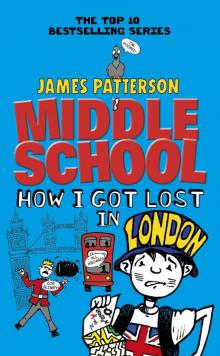 Middle School: How I Got Lost in London
Middle School: How I Got Lost in London Just My Rotten Luck
Just My Rotten Luck Red Alert
Red Alert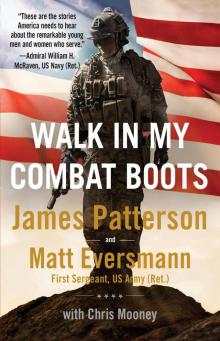 Walk in My Combat Boots
Walk in My Combat Boots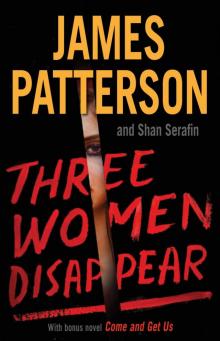 Three Women Disappear
Three Women Disappear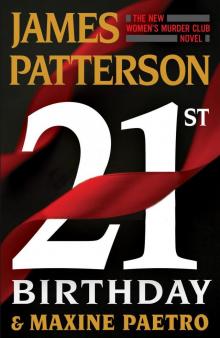 21st Birthday
21st Birthday All-American Adventure
All-American Adventure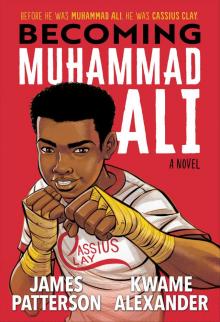 Becoming Muhammad Ali
Becoming Muhammad Ali The Murder of an Angel
The Murder of an Angel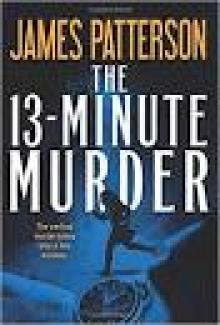 The 13-Minute Murder
The 13-Minute Murder Rebels With a Cause
Rebels With a Cause The Trial
The Trial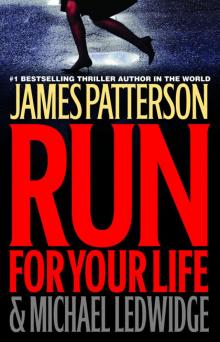 Run for Your Life
Run for Your Life The House Next Door
The House Next Door NYPD Red 2
NYPD Red 2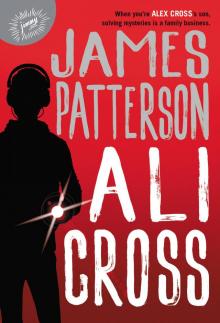 Ali Cross
Ali Cross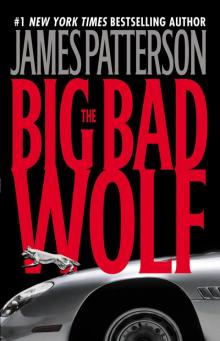 The Big Bad Wolf
The Big Bad Wolf Middle School: My Brother Is a Big, Fat Liar
Middle School: My Brother Is a Big, Fat Liar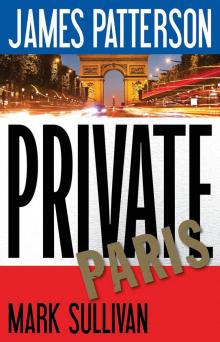 Private Paris
Private Paris Miracle on the 17th Green
Miracle on the 17th Green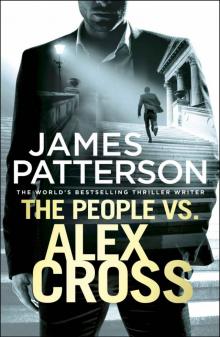 The People vs. Alex Cross
The People vs. Alex Cross The Beach House
The Beach House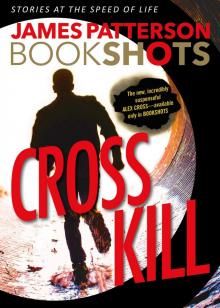 Cross Kill
Cross Kill Dog Diaries
Dog Diaries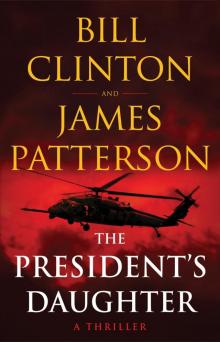 The President's Daughter
The President's Daughter Happy Howlidays
Happy Howlidays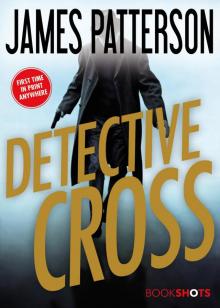 Detective Cross
Detective Cross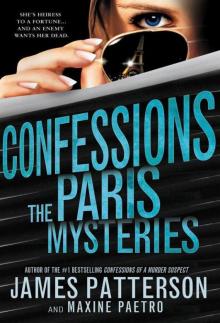 The Paris Mysteries
The Paris Mysteries Watch the Skies
Watch the Skies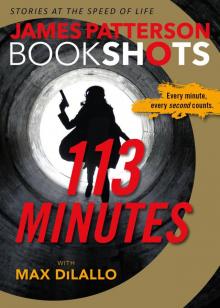 113 Minutes
113 Minutes Alex Cross's Trial
Alex Cross's Trial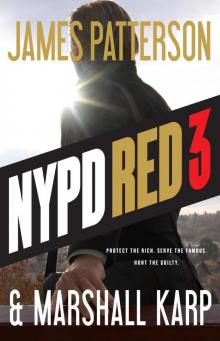 NYPD Red 3
NYPD Red 3 Hush Hush
Hush Hush Now You See Her
Now You See Her Merry Christmas, Alex Cross
Merry Christmas, Alex Cross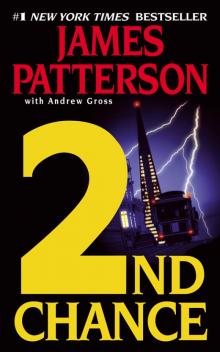 2nd Chance
2nd Chance Private Royals
Private Royals Two From the Heart
Two From the Heart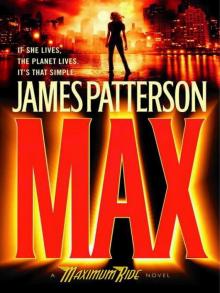 Max
Max I, Funny
I, Funny Blindside (Michael Bennett)
Blindside (Michael Bennett) Sophia, Princess Among Beasts
Sophia, Princess Among Beasts Armageddon
Armageddon Don't Blink
Don't Blink NYPD Red 6
NYPD Red 6 The First Lady
The First Lady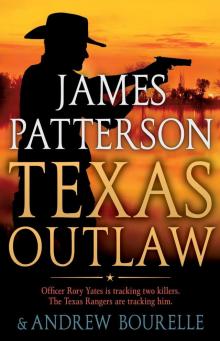 Texas Outlaw
Texas Outlaw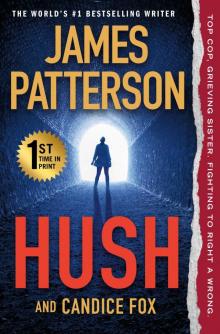 Hush
Hush Beach Road
Beach Road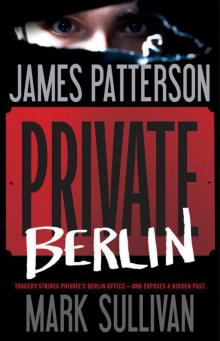 Private Berlin
Private Berlin The Family Lawyer
The Family Lawyer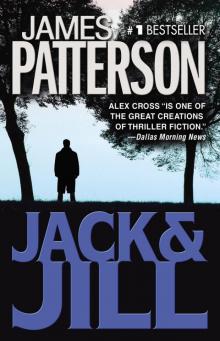 Jack & Jill
Jack & Jill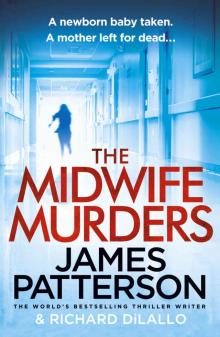 The Midwife Murders
The Midwife Murders Middle School: Rafe's Aussie Adventure
Middle School: Rafe's Aussie Adventure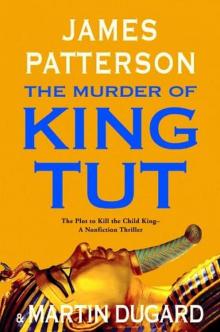 The Murder of King Tut: The Plot to Kill the Child King
The Murder of King Tut: The Plot to Kill the Child King First Love
First Love The Dangerous Days of Daniel X
The Dangerous Days of Daniel X Hawk
Hawk Private Delhi
Private Delhi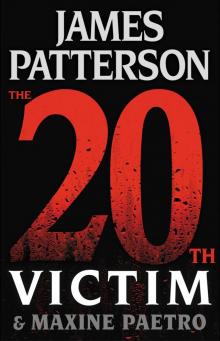 The 20th Victim
The 20th Victim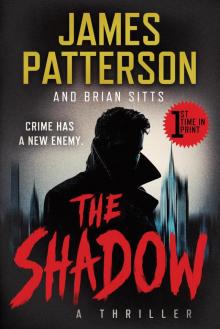 The Shadow
The Shadow Katt vs. Dogg
Katt vs. Dogg The Palm Beach Murders
The Palm Beach Murders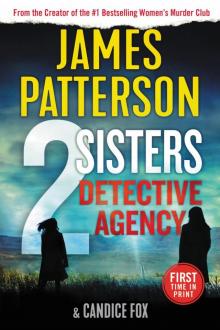 2 Sisters Detective Agency
2 Sisters Detective Agency Humans, Bow Down
Humans, Bow Down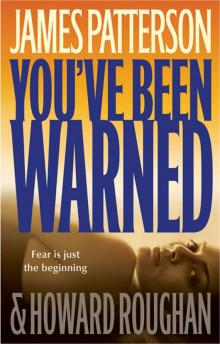 You've Been Warned
You've Been Warned Cradle and All
Cradle and All 20th Victim: (Women’s Murder Club 20) (Women's Murder Club)
20th Victim: (Women’s Murder Club 20) (Women's Murder Club)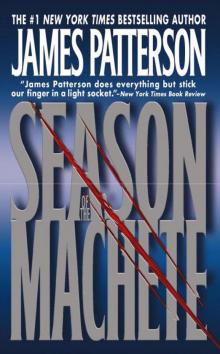 Season of the Machete
Season of the Machete Woman of God
Woman of God Mary, Mary
Mary, Mary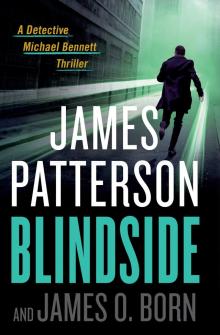 Blindside
Blindside Invisible
Invisible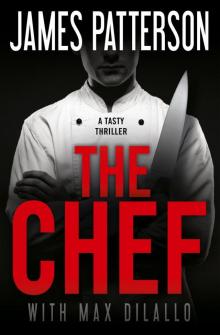 The Chef
The Chef Revenge
Revenge See How They Run
See How They Run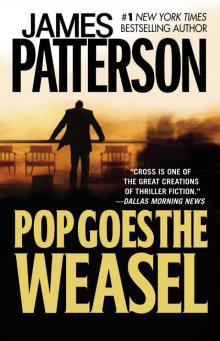 Pop Goes the Weasel
Pop Goes the Weasel 15th Affair
15th Affair Middle School: Get Me Out of Here!
Middle School: Get Me Out of Here! Middle School: How I Survived Bullies, Broccoli, and Snake Hill
Middle School: How I Survived Bullies, Broccoli, and Snake Hill From Hero to Zero - Chris Tebbetts
From Hero to Zero - Chris Tebbetts G'day, America
G'day, America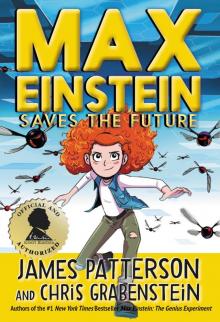 Max Einstein Saves the Future
Max Einstein Saves the Future The Cornwalls Are Gone
The Cornwalls Are Gone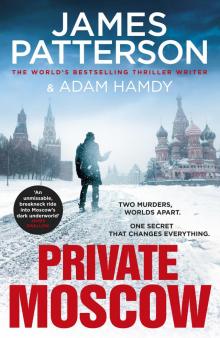 Private Moscow
Private Moscow Two Schools Out - Forever
Two Schools Out - Forever Hollywood 101
Hollywood 101 Deadly Cargo: BookShots
Deadly Cargo: BookShots 21st Birthday (Women's Murder Club)
21st Birthday (Women's Murder Club) The Sky Is Falling
The Sky Is Falling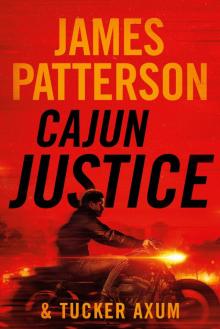 Cajun Justice
Cajun Justice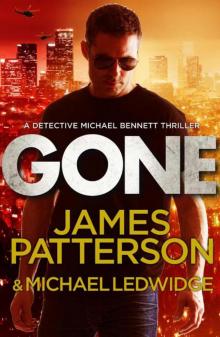 Bennett 06 - Gone
Bennett 06 - Gone The House of Kennedy
The House of Kennedy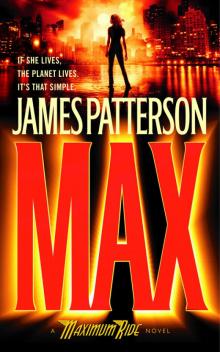 Waterwings
Waterwings Murder is Forever, Volume 2
Murder is Forever, Volume 2 Maximum Ride 02
Maximum Ride 02 Treasure Hunters--The Plunder Down Under
Treasure Hunters--The Plunder Down Under Private Royals: BookShots (A Private Thriller)
Private Royals: BookShots (A Private Thriller) After the End
After the End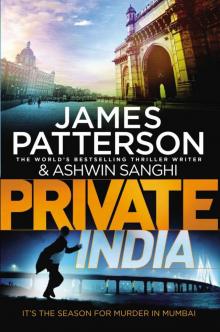 Private India: (Private 8)
Private India: (Private 8) Escape to Australia
Escape to Australia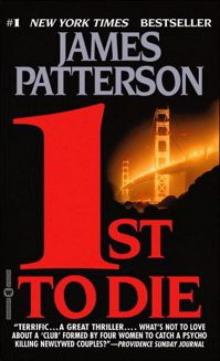 WMC - First to Die
WMC - First to Die Boys Will Be Boys
Boys Will Be Boys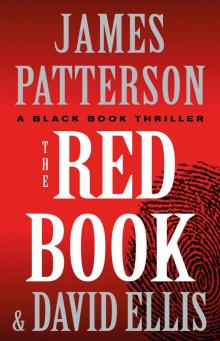 The Red Book
The Red Book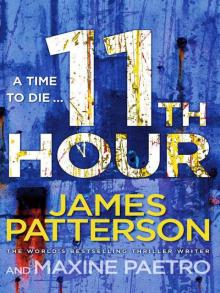 11th hour wmc-11
11th hour wmc-11 Hidden
Hidden You've Been Warned--Again
You've Been Warned--Again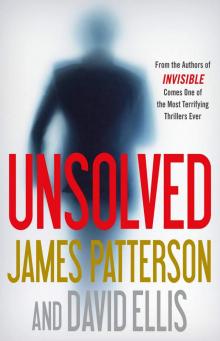 Unsolved
Unsolved Pottymouth and Stoopid
Pottymouth and Stoopid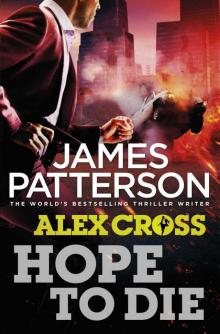 Hope to Die: (Alex Cross 22)
Hope to Die: (Alex Cross 22) The Moores Are Missing
The Moores Are Missing Black & Blue: BookShots (Detective Harriet Blue Series)
Black & Blue: BookShots (Detective Harriet Blue Series) Airport - Code Red: BookShots
Airport - Code Red: BookShots Kill or Be Killed
Kill or Be Killed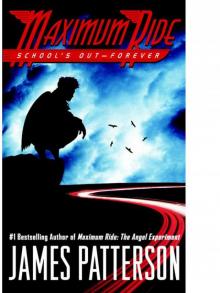 School's Out--Forever
School's Out--Forever When the Wind Blows
When the Wind Blows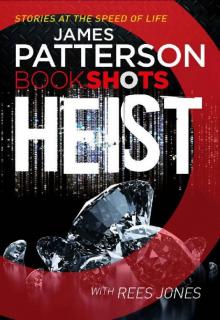 Heist: BookShots
Heist: BookShots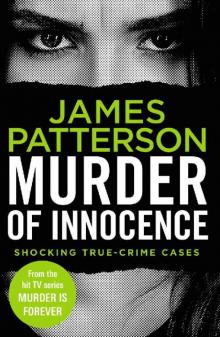 Murder of Innocence (Murder Is Forever)
Murder of Innocence (Murder Is Forever) Red Alert_An NYPD Red Mystery
Red Alert_An NYPD Red Mystery Malicious
Malicious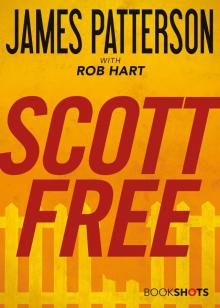 Scott Free
Scott Free The Summer House
The Summer House French Kiss
French Kiss Treasure Hunters
Treasure Hunters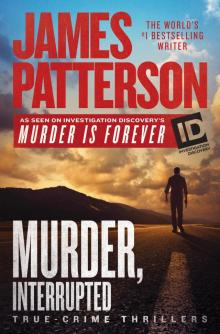 Murder Is Forever, Volume 1
Murder Is Forever, Volume 1 Secret of the Forbidden City
Secret of the Forbidden City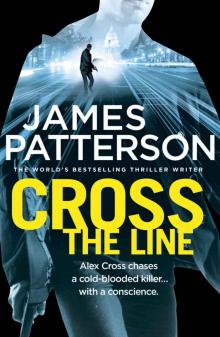 Cross the Line: (Alex Cross 24)
Cross the Line: (Alex Cross 24)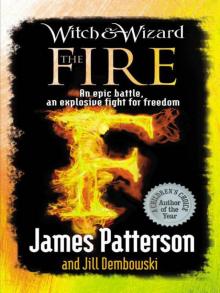 Witch & Wizard: The Fire
Witch & Wizard: The Fire![Women's Murder Club [06] The 6th Target Read online](http://i1.bookreadfree.com/i/03/24/womens_murder_club_06_the_6th_target_preview.jpg) Women's Murder Club [06] The 6th Target
Women's Murder Club [06] The 6th Target Cross My Heart ac-21
Cross My Heart ac-21 Alex Cross’s Trial ак-15
Alex Cross’s Trial ак-15 Alex Cross 03 - Jack & Jill
Alex Cross 03 - Jack & Jill Liar Liar: (Harriet Blue 3) (Detective Harriet Blue Series)
Liar Liar: (Harriet Blue 3) (Detective Harriet Blue Series) Cross Country ак-14
Cross Country ак-14 Honeymoon h-1
Honeymoon h-1 Maximum Ride: The Angel Experiment
Maximum Ride: The Angel Experiment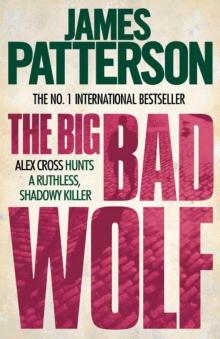 The Big Bad Wolf ак-9
The Big Bad Wolf ак-9 Dead Heat: BookShots (Book Shots)
Dead Heat: BookShots (Book Shots) Kill and Tell
Kill and Tell Avalanche
Avalanche Robot Revolution
Robot Revolution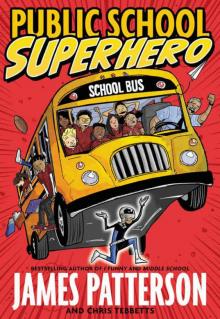 Public School Superhero
Public School Superhero 12th of Never
12th of Never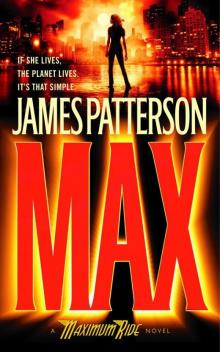 Max: A Maximum Ride Novel
Max: A Maximum Ride Novel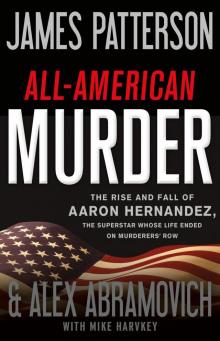 All-American Murder
All-American Murder Murder Games
Murder Games Robots Go Wild!
Robots Go Wild! My Life Is a Joke
My Life Is a Joke Private: Gold
Private: Gold Demons and Druids
Demons and Druids Jacky Ha-Ha
Jacky Ha-Ha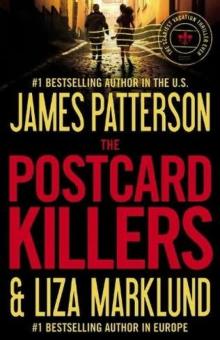 Postcard killers
Postcard killers Princess: A Private Novel
Princess: A Private Novel Kill Alex Cross ac-18
Kill Alex Cross ac-18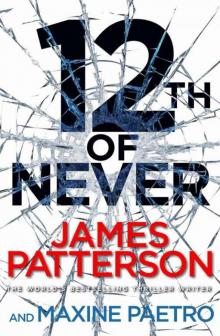 12th of Never wmc-12
12th of Never wmc-12 The Murder of King Tut
The Murder of King Tut I Totally Funniest
I Totally Funniest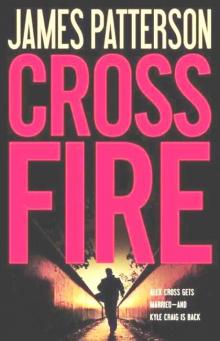 Cross Fire ак-17
Cross Fire ак-17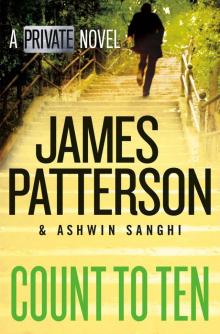 Count to Ten
Count to Ten![Women's Murder Club [10] 10th Anniversary Read online](http://i1.bookreadfree.com/i1/03/30/womens_murder_club_10_10th_anniversary_preview.jpg) Women's Murder Club [10] 10th Anniversary
Women's Murder Club [10] 10th Anniversary![Women's Murder Club [01] 1st to Die Read online](http://i1.bookreadfree.com/i1/03/31/womens_murder_club_01_1st_to_die_preview.jpg) Women's Murder Club [01] 1st to Die
Women's Murder Club [01] 1st to Die I, Michael Bennett mb-5
I, Michael Bennett mb-5 Nooners
Nooners![Women's Murder Club [08] The 8th Confession Read online](http://i1.bookreadfree.com/i1/04/03/womens_murder_club_08_the_8th_confession_preview.jpg) Women's Murder Club [08] The 8th Confession
Women's Murder Club [08] The 8th Confession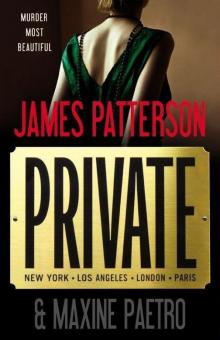 Private jm-1
Private jm-1 Treasure Hunters: Danger Down the Nile
Treasure Hunters: Danger Down the Nile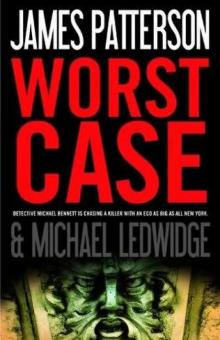 Worst Case mb-3
Worst Case mb-3 Don’t Blink
Don’t Blink The Games
The Games The Medical Examiner: A Women's Murder Club Story
The Medical Examiner: A Women's Murder Club Story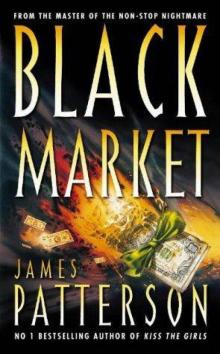 Black Market
Black Market Gone mb-6
Gone mb-6![Women's Murder Club [02] 2nd Chance Read online](http://i1.bookreadfree.com/i1/04/04/womens_murder_club_02_2nd_chance_preview.jpg) Women's Murder Club [02] 2nd Chance
Women's Murder Club [02] 2nd Chance French Twist
French Twist Kenny Wright
Kenny Wright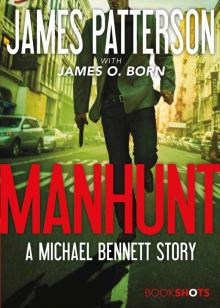 Manhunt: A Michael Bennett Story
Manhunt: A Michael Bennett Story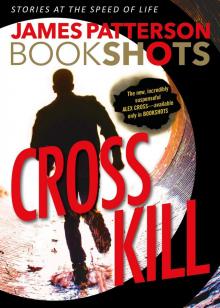 Cross Kill: An Alex Cross Story
Cross Kill: An Alex Cross Story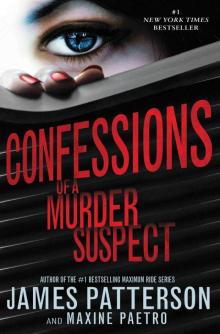 Confessions of a Murder Suspect td-1
Confessions of a Murder Suspect td-1 Second Honeymoon h-2
Second Honeymoon h-2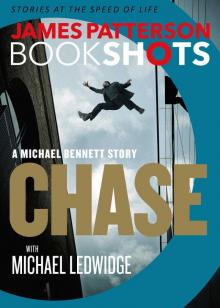 Chase_A BookShot_A Michael Bennett Story
Chase_A BookShot_A Michael Bennett Story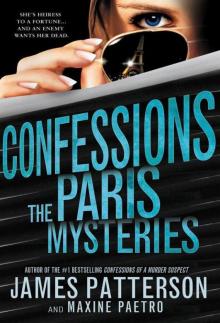 Confessions: The Paris Mysteries
Confessions: The Paris Mysteries![Women's Murder Club [09] The 9th Judgment Read online](http://i1.bookreadfree.com/i2/04/08/womens_murder_club_09_the_9th_judgment_preview.jpg) Women's Murder Club [09] The 9th Judgment
Women's Murder Club [09] The 9th Judgment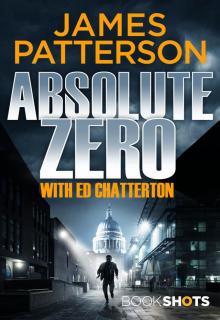 Absolute Zero
Absolute Zero Nevermore: The Final Maximum Ride Adventure mr-8
Nevermore: The Final Maximum Ride Adventure mr-8 Angel: A Maximum Ride Novel mr-7
Angel: A Maximum Ride Novel mr-7 Juror #3
Juror #3 Million-Dollar Mess Down Under
Million-Dollar Mess Down Under The Verdict: BookShots (A Jon Roscoe Thriller)
The Verdict: BookShots (A Jon Roscoe Thriller)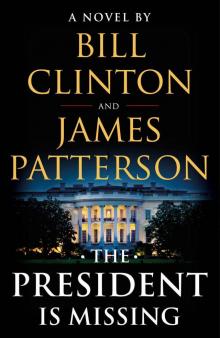 The President Is Missing: A Novel
The President Is Missing: A Novel![Women's Murder Club [04] 4th of July Read online](http://i1.bookreadfree.com/i2/04/06/womens_murder_club_04_4th_of_july_preview.jpg) Women's Murder Club [04] 4th of July
Women's Murder Club [04] 4th of July The Hostage: BookShots (Hotel Series)
The Hostage: BookShots (Hotel Series) $10,000,000 Marriage Proposal
$10,000,000 Marriage Proposal Diary of a Succubus
Diary of a Succubus Unbelievably Boring Bart
Unbelievably Boring Bart Angel: A Maximum Ride Novel
Angel: A Maximum Ride Novel Stingrays
Stingrays Confessions: The Private School Murders
Confessions: The Private School Murders Stealing Gulfstreams
Stealing Gulfstreams![Women's Murder Club [05] The 5th Horseman Read online](http://i1.bookreadfree.com/i2/04/05/womens_murder_club_05_the_5th_horseman_preview.jpg) Women's Murder Club [05] The 5th Horseman
Women's Murder Club [05] The 5th Horseman Zoo 2
Zoo 2 Jack Morgan 02 - Private London
Jack Morgan 02 - Private London Treasure Hunters--Quest for the City of Gold
Treasure Hunters--Quest for the City of Gold The Christmas Mystery
The Christmas Mystery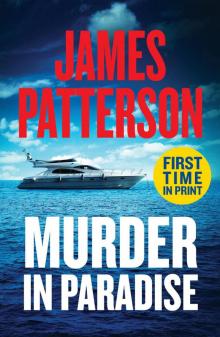 Murder in Paradise
Murder in Paradise Kidnapped: BookShots (A Jon Roscoe Thriller)
Kidnapped: BookShots (A Jon Roscoe Thriller) Triple Homicide_Thrillers
Triple Homicide_Thrillers 16th Seduction: (Women’s Murder Club 16) (Women's Murder Club)
16th Seduction: (Women’s Murder Club 16) (Women's Murder Club)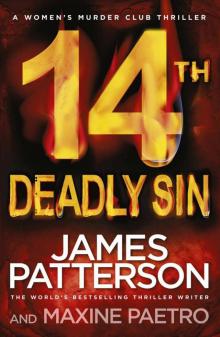 14th Deadly Sin: (Women’s Murder Club 14)
14th Deadly Sin: (Women’s Murder Club 14)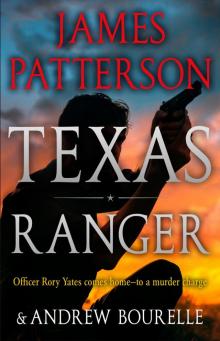 Texas Ranger
Texas Ranger Witch & Wizard 04 - The Kiss
Witch & Wizard 04 - The Kiss![Women's Murder Club [03] 3rd Degree Read online](http://i1.bookreadfree.com/i2/04/12/womens_murder_club_03_3rd_degree_preview.jpg) Women's Murder Club [03] 3rd Degree
Women's Murder Club [03] 3rd Degree Break Point: BookShots
Break Point: BookShots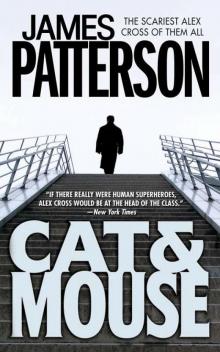 Alex Cross 04 - Cat & Mouse
Alex Cross 04 - Cat & Mouse Maximum Ride
Maximum Ride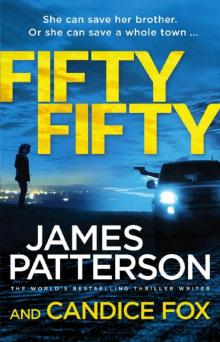 Fifty Fifty: (Harriet Blue 2) (Detective Harriet Blue Series)
Fifty Fifty: (Harriet Blue 2) (Detective Harriet Blue Series) Alex Cross 02 - Kiss the Girls
Alex Cross 02 - Kiss the Girls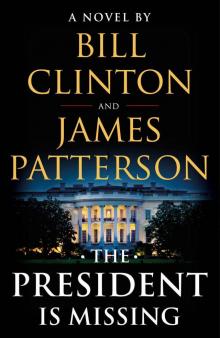 The President Is Missing
The President Is Missing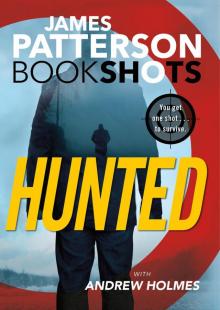 Hunted
Hunted House of Robots
House of Robots Dangerous Days of Daniel X
Dangerous Days of Daniel X Tick Tock mb-4
Tick Tock mb-4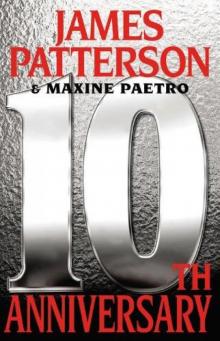 10th Anniversary wmc-10
10th Anniversary wmc-10 The Exile
The Exile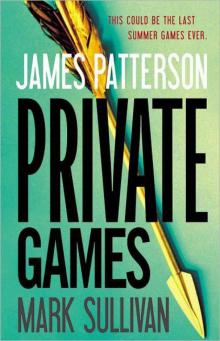 Private Games-Jack Morgan 4 jm-4
Private Games-Jack Morgan 4 jm-4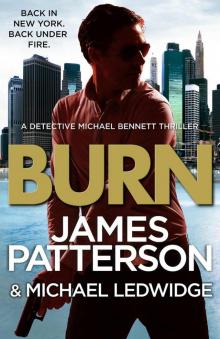 Burn: (Michael Bennett 7)
Burn: (Michael Bennett 7) Laugh Out Loud
Laugh Out Loud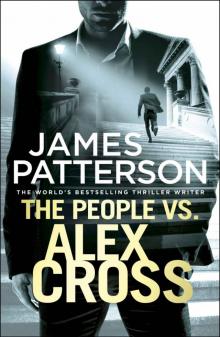 The People vs. Alex Cross: (Alex Cross 25)
The People vs. Alex Cross: (Alex Cross 25)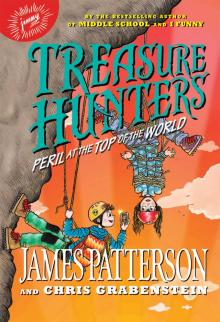 Peril at the Top of the World
Peril at the Top of the World I Funny TV
I Funny TV Merry Christmas, Alex Cross ac-19
Merry Christmas, Alex Cross ac-19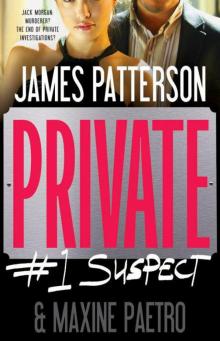 #1 Suspect jm-3
#1 Suspect jm-3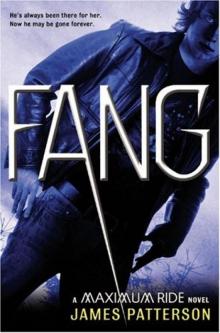 Fang: A Maximum Ride Novel
Fang: A Maximum Ride Novel![Women's Murder Club [07] 7th Heaven Read online](http://i1.bookreadfree.com/i2/04/13/womens_murder_club_07_7th_heaven_preview.jpg) Women's Murder Club [07] 7th Heaven
Women's Murder Club [07] 7th Heaven The End
The End